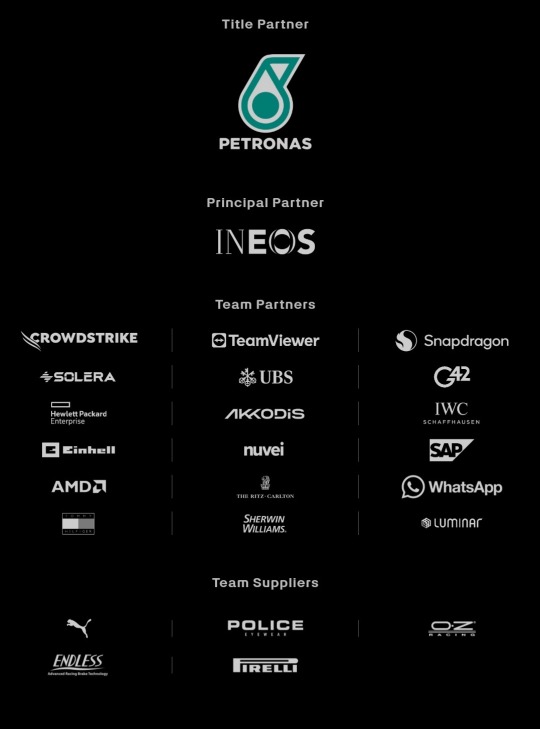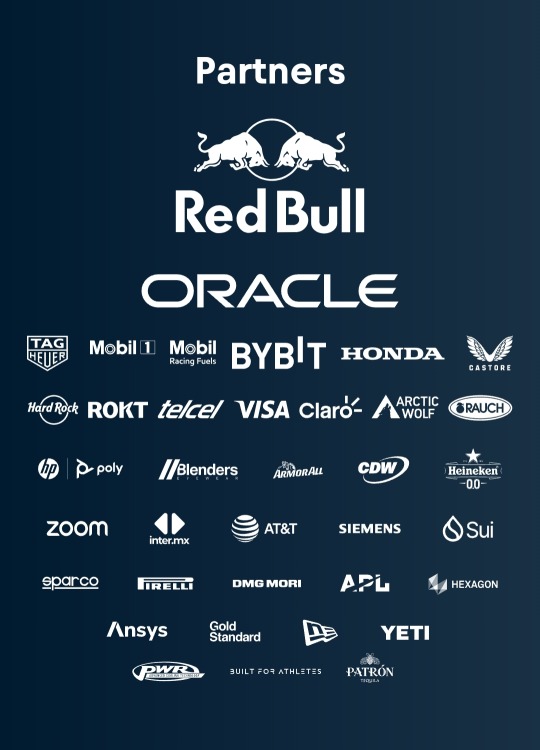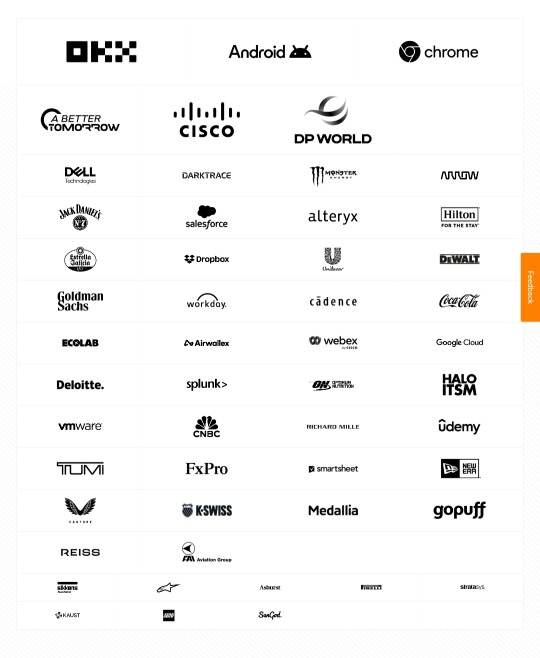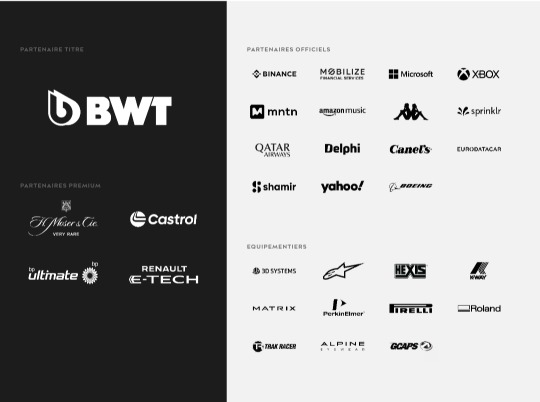#enterprise content management system
Text
Explore Vast Edge's Content Management Systems (CMS) designed to streamline e-commerce, web, and enterprise content. Our solutions offer user-friendly features, mobile responsiveness, AI integration, and robust security for seamless business growth. Enhance SEO, improve workflows, and boost productivity with scalable, cloud-hosted CMS platforms tailored for enterprises.
#Vast Edge CMS#content management system#e-commerce CMS#web CMS#enterprise CMS#AI-driven CMS#SEO optimization#cloud hosting CMS#mobile responsive CMS#scalable content management#business content solutions#CMS workflow
0 notes
Text
Documents Library in ALZERP Cloud ERP Software
Key Features of the Documents Library
Automatic Document Uploads: Documents from various ERP modules, such as sales, purchase, vouchers, and employee transactions, are automatically added to the library.
Document Conversion: Image files are automatically converted to PDF format for universal compatibility.
Advanced Search: Easily find documents by date, number, type, or other criteria.
Multiple File Actions: Download single files or merge multiple PDFs for streamlined access.
Document Organization: Categorize documents into folders for better organization and retrieval.
Document Security: Ensure secure storage and access control for sensitive documents.

#Cloud ERP Document Management#Document Management System (DMS)#Cloud-Based Document Management#ERP Document Management#Digital Document Management#Document Storage and Retrieval#Paperless Office ERP#ERP Document Control#Secure Document Management in ERP#Electronic Document Management#Document Workflow Automation ERP#Enterprise Content Management (ECM)#Cloud Document Storage#ERP Integrated Document Management#Digital Document Management ERP#Enterprise document control system#Secure Document Storage Cloud ERP#Cloud-based File Management ERP#Cloud-Based Document Collaboration#Centralized Document Storage ERP#Document Retention#Record Management#Compliance Management#ERP Document Tracking#Audit Trails#Cloud ERP Compliance Document Management#Cloud-Based Document Audit Trail#Document Lifecycle Management Cloud#Document Process Automation Cloud#Best Cloud Document Management Systems
0 notes
Text
Unlocking the Power of Content Service Platforms: A New Era in Digital Content Management
The digital landscape continues to evolve, driving organizations to seek advanced solutions for managing their ever-growing volumes of structured and unstructured data. Content Service Platforms (CSPs) have emerged as a pivotal technology in this context, offering comprehensive tools to manage, store, and utilize content more effectively. The latest forecast analysis of the Content Service…
#business#content management software#Content Management System#Content Service Platform#Content service platforms#CSP#Digital Content Management#enterprise content management#Security
0 notes
Text
#content services#enterprise search#data management#content management system#enterprise resource planning#crm#dbms#low code platform#enterprise content management
0 notes
Text
How to Choose the Right Enterprise Content Management Solutions for Your Business

Choosing the right Enterprise Content Management Solutions can be a game-changer for your business. In today's fast-paced digital landscape, managing content efficiently is crucial for maintaining competitiveness and ensuring smooth operations. This article will guide you through the process of selecting the best ECM solution tailored to your business needs.
Understanding Enterprise Content Management Solutions
Definition of ECM
Enterprise Content Management System refers to the strategies, methods, and tools used to capture, manage, store, and deliver content and documents related to organizational processes. ECM solutions are designed to streamline information management across an enterprise.
Key Features of ECM Solutions
Key features include document management, version control, workflow automation, compliance management, and advanced search capabilities. These features help in organizing and retrieving information quickly and efficiently.
Types of Enterprise Content Management Systems
Enterprise Document Management Systems
Enterprise Document Management Systems are designed to handle the creation, storage, and control of documents. They provide features like version control, metadata tagging, and secure access.
Web Content Management Systems
Web Content Management Systems (WCMS) manage the content on websites. They offer tools for content creation, editing, and publishing, ensuring that web content is consistent and up-to-date.
Digital Asset Management Systems
Digital Asset Management Systems (DAMS) focus on the management of digital assets like images, videos, and graphics. They help in storing, organizing, and retrieving digital media files efficiently.
Benefits of Implementing ECM Solutions
Improved Efficiency
ECM solutions streamline business processes, reducing the time and effort required to manage documents and content. This leads to increased productivity and efficiency.
Enhanced Security
ECM systems offer robust security features, ensuring that sensitive information is protected against unauthorized access and breaches.
Better Collaboration
With ECM solutions, teams can collaborate more effectively by sharing documents and information seamlessly. This fosters a collaborative work environment.
Factors to Consider When Choosing an ECM Solution
Business Needs Assessment
Assess your business needs to determine what features and functionalities are essential for your ECM solution. This helps in selecting a system that aligns with your organizational goals.
Scalability
Choose an ECM solution that can scale with your business. As your organization grows, the ECM system should be able to handle increased content and user demands.
Integration Capabilities
Ensure that the ECM solution can integrate with your existing systems and software. This facilitates smooth data exchange and reduces operational disruptions.
Evaluating Enterprise Content Management System Software
User-Friendliness
The ECM system should be easy to use, with an intuitive interface that requires minimal training. This enhances user adoption and reduces the learning curve.
Customization Options
Look for ECM solutions that offer customization options to tailor the system to your specific needs. Customization can significantly improve the system's functionality and relevance.
Support and Training
Reliable support and comprehensive training are crucial for the successful implementation and maintenance of an ECM solution. Choose a provider that offers excellent customer service and training resources.
Top Enterprise Software Development Companies
Leading Providers in the Market
Some of the top enterprise software development companies include IBM, Microsoft, and OpenText. These providers offer robust ECM solutions with a wide range of features.
Criteria for Selecting a Vendor
When selecting a vendor, consider factors like the provider's reputation, experience, customer reviews, and the range of services offered. Ensure they have a proven track record in delivering quality ECM solutions.
Software for Enterprise Risk Management
Importance of Risk Management in ECM
Enterprise risk management software is crucial in ECM to ensure that content is secure and compliant with regulations. Effective risk management software helps in identifying, assessing, and mitigating risks associated with content management.
Features to Look for in Risk Management Software
Key features include risk assessment tools, compliance tracking, audit trails, and automated alerts. These features help in maintaining a secure and compliant ECM environment.
Custom Software Development Consulting
Role of Consulting in ECM Implementation
Custom software development consulting plays a vital role in the successful implementation of ECM solutions. Consultants provide expert advice, project management, and technical support to tailor the system to your needs.
How to Choose the Right Consulting Firm
Look for firms with experience in ECM implementations, a strong portfolio, and positive client testimonials. The right consulting firm will offer valuable insights and support throughout the implementation process.
Case Studies of Successful ECM Implementations
Real-World Examples
Review case studies of organizations that have successfully implemented ECM solutions. These examples provide insights into the challenges faced and the benefits realized.
Lessons Learned
Analyzing these case studies helps in understanding the best practices and common pitfalls in ECM implementation. This knowledge can guide your own implementation process.
Challenges in Implementing ECM Solutions
Common Pitfalls
Challenges include resistance to change, integration issues, and inadequate training. Recognizing these pitfalls early can help in developing strategies to overcome them.
Strategies to Overcome Challenges
Strategies include effective change management, thorough planning, and continuous training. These strategies ensure a smooth and successful implementation.
Future Trends in Enterprise Content Management
AI and Machine Learning
AI and machine learning are revolutionizing ECM by automating processes and providing advanced analytics. These technologies enhance the efficiency and intelligence of ECM systems.
Cloud-Based ECM Solutions
Cloud-based ECM solutions offer scalability, flexibility, and cost savings. They allow organizations to access and manage content from anywhere, making them ideal for remote work environments.
How to Measure the Success of Your ECM Solution
Key Performance Indicators
KPIs include user adoption rates, time saved in document retrieval, and compliance rates. These indicators help in assessing the effectiveness of your ECM solution.
ROI Analysis
Conducting an ROI analysis helps in understanding the financial benefits of the ECM solution. Compare the costs of implementation with the savings and productivity gains achieved.
Tips for Maintaining and Updating Your ECM System
Regular Audits
Perform regular audits to ensure that the ECM system is functioning optimally and meeting compliance requirements. Audits help in identifying areas for improvement.
Training and Development
Continuous training and development ensure that users stay updated with the latest features and best practices. This enhances the overall effectiveness of the ECM system.
Conclusion
Choosing the right Enterprise Content Management Solution is a critical decision that can significantly impact your business. By understanding your needs, evaluating options carefully, and considering future trends, you can select an ECM solution that enhances efficiency, security, and collaboration. Remember, the right ECM solution not only manages your content but also supports your business goals and growth.
Ready To Revolutionize Your Enterprise Content Management Solution? Learn How: How to Choose the Right Enterprise Content Management Solutions for Your Business
#Enterprise Content Management Solutions#enterprise content management system software#enterprise software development companies#software for enterprise risk management#custom software development outsourcing#custom software development services US#custom software development services
0 notes
Text

How a SharePoint-based CMS can streamline enterprise policy management & lifecycle
Microsoft SharePoint-based CMS is an ideal content management system for enterprise policy management due to its versatility and collaborative capabilities.
Managing, updating, and regulating enterprise policy is crucial for organizations to set a regulatory code of conduct. Enterprise policy management (EPM) is an integral business operation that ensures the implementation of company regulations in both internal and external environments by storing, managing, and analyzing policy documents. Not only that, but it also enables organizations to make necessary changes and updates in the company policy to improve scalability and adaptability with the changing environment, thus maintaining a healthy policy life cycle.
As the business environment has changed drastically due to a global pandemic, it is now more important than ever for companies to incorporate fast, accurate, and reliable content management systems for policy management. And for a reliable content management system, nothing beats Microsoft SharePoint’s versatility and efficiency in data storage, processing, and distribution capabilities.
Embracing the age of digital enterprise policy management
Nowadays, enterprise policies need to be dynamic enough to keep up with the ever-changing business environment, especially when it comes to defining responsibilities and liabilities when transitioning from legacy systems to digital. Numerous businesses struggle through this phase due to the need for drastic policy changes. That challenge has only amplified in a post-pandemic business environment.
In such a scenario, having a robust and reliable EPM system backed by an industry-grade content management system (CMS) will help emerging businesses in adapting to the market changes with quick and future-centric policy changes. This can enable organizations to better analyze current market trends, company growth, and government regulations to create a smooth policy life cycle. To that end, a content management system built on Microsoft SharePoint can add significantly to a company’s policy management system for years to come.
How SharePoint-based CMS can help you build a modern enterprise policy management system
SharePoint helps organizations to create a collaborative work environment with an efficient and secured data storage, analyzing, and distributing platform for businesses. One of the major functions SharePoint helps policymakers perform is streamlining and organizing the complex and vast data that goes into creating and updating policies.
From an enterprise policy management perspective, SharePoint works perfectly as a collaborative work system where the leadership can work together with key departments such as HR and IT to update company policy and communicate changes with their employees quickly and securely.
The sheer versatility of SharePoint with its plethora of features can be customized to match individual business needs. It also applies to designing the most comprehensive policy management ecosystem to handle the dynamic external compliance burden. Being the central hub of information, SharePoint also helps in upgrading policies to match scalability and digital integration needs.
Now, let’s take a look at SharePoint’s key features that can help organizations streamline and modernize enterprise policy management:
Secure data storage
The biggest strength of SharePoint is its secure architecture and data storage. The platform provides centralized storage for the company’s sensitive data, which also includes the company policies and market insights. SharePoint provides end-to-end storage security with the following features:
Permission-based access: SharePoint enables policy and decision-makers to assign various permission levels to users depending on the company hierarchy, which means only the top-level management or specific designated users can create, view, or modify policies.
Version control: SharePoint’s version tracking allows users to prevent accidental deletion and overwriting by restoring the last relevant version easily.
Audit trail: SharePoint allows administrators to track people accessing and editing the company policy files with date, time, and version history data.
Tracking and assessment
The SharePoint automated notification feature informs people within the organization about the updates in enterprise policies and evaluating its benefits by communicating with the leadership team. In addition to it, SharePoint offers the following features to enable accurate tracking and assessment:
Real-time dashboards: Build detailed dashboards on Excel or Power BI and then import them to the SharePoint CMS. This way, leaders and administrators can get insights on the list of policies, version details, status for approval, and other crucial data. When someone from the leadership updates or approves a new policy, it immediately reflects on the dashboard, notifying all employees of the change.
Alerts and notifications: SharePoint can be configured to generate various automated notifications. For example, you can configure automatic notifications that inform employees when a policy or a procedure gets modified, or a new document is added to the system. Furthermore, SharePoint can alert a policy manager when a certain policy needs to be revised or reissued.
Assessments: One of the most interesting features of SharePoint includes customized quizzes for employees to assess their policy knowledge. It can also lock the policy read until the employee completes the required assessment tests.
Quick policy creation, distribution, and retrieval
Being a collaborative enterprise platform, SharePoint supports the generation, publication, and distribution of policy content. It supports various content formats like Word documents, images, videos, and audio files. Below are some of the features that help streamline policy document creation and distribution processes:
Content template: Having a set template on various content types significantly eases up the process of creating new documents like renewed policies. SharePoint allows creating and storing custom templates to save time and maintain consistency while making new policies or updating the existing ones.
Real-time collaboration: SharePoint helps the leadership team with a digital collaborative platform to work on creating new policies and updating the current ones. As teams can work simultaneously in real-time, it reduces the time needed for policy finalization.
Workflows: Build custom, automated workflows for your SharePoint CMS using Power Automate to facilitate smooth approval processes for new policies. Leadership teams can design a new policy and share it across relevant departments for quick reading and approvals. Thus, it streamlines the overall policy life cycle with defined stages from start to finish.
Search: SharePoint speeds up the policy search by enabling search by policy titles, keywords, or even a part of the content. For big enterprises with numerous policies, employees can find the required policy document with SharePoint’s result by relevancy.
Leverage custom SharePoint development solutions for enterprise policy and knowledge management
A SharePoint-based content management system can add sophistication, customizability, and simplicity to your enterprise policy management systems. With a fully digital system that applies automation to reduce time and error, business leaders can focus better on core business activities while being supported by a robust policy system.
VBeyond Digital helps you make this process even simpler and cost and time-effective Microsoft 365 solutions to accelerate your enterprise policy management process.
Contact us now to discuss your organization’s requirements and build powerful solutions on SharePoint and Microsoft 365.
#sharepoint cms#best enterprise cms#enterprise content management software#enterprise content management systems
0 notes
Text
Benefits of Modern Enterprise Content Management Software
Enterprise Content Management allows businesses to streamline their content and organisational information through effective and reliable automation. It keeps up with the rapidly changing nature of data and procures strategies, tools, and methodologies to preserve, store, and manage it effectively.
The benefits of deploying an ECM system are immense. Let’s have a look at some of them
Benefits of Enterprise Content Management
1. Enhanced Security
The digital world is always engaged in a battle between preservers and hackers. Files and critical information are no longer safe in a virtual space.
In such a climate, the arrival of ECM is a godsend. All the information preserved by such a system is stored in a digital repository immune to all external threats. Only authorised users can access the content stored in the ECM.
2. Compliance with Government Regulations
The government is more active than ever in imposing its own as well as industrial regulations on different organisations. Failing to comply with such standards can lead to staggering penalties, ill repute, and loss of productivity.
Unlike in the traditional days, compliance now needs to be proved based on the usage of information in the right way.With ECM, the company will have all the records, activity history, and every detail needed to ensure compliance to the laws mandated by the government.
3. Increased Productivity
ECM stores content and information in a well-organized, easily accessible manner. Authorised end users can therefore streamline their approach to using organisational content, and focus their attention on other, more productive tasks that require their attention.
4. Reduced Expenses
The deployment of a thorough Enterprise Content Management system eliminates the cost of using and managing paper documents.
Moreover, it also reduces the need for a large workforce required to sift through vast webs of organisational information. The entire process becomes automated, reducing the overall costs required for the same job.
Conclusion
ECM is gaining worldwide popularity among businesses of all scales. The ease of storing content and seamless access to every piece of information that the company owns saves significant time and resources. The benefits discussed above can not only help your business stay competitive but will also contribute to automating organisational workflow.
#Enterprise content management#Content Management#Content Management System#Enterprise Content Management Software
0 notes
Text

You other web hosts can't deny
That when a load time's more than an itty bitty wait
And a hacker's in your space
You get...
Well, pretty upset. That's not something to take lightly.
That's why you shouldn't settle for those other web hosts.
You need WordPress VIP: the world's most popular content management system, built with enterprise-grade security and reliability. 🤝
#baby got backends#wordpress vip#enterprise wordpress#wordpress#cms#content management#marketing#web security#cybersecurity
5K notes
·
View notes
Note
Hi, i just learned about the scientific revolution in europe at school. Can you tell me why you dont think scientific revolutions exist? im curious!
So I feel like I have to lead with the fact that I'm kind of arguing two different points when I say scientific revolutions aren't really a thing
One is that I'm objecting to a specific, extremely foundational theory of scientific revolutions that was put forth by the philosopher Thomas Kuhn, which I think really misrepresents how science is actually practiced in the name of fitting things to a nice model. The other is that I think the fundamental problem with the idea is that it's too vague to effectively describe an actual process that happens.
It's certainly true that there are important advances in science that get referred to as "revolutions" that fundamentally changed their fields -- the shift from the Ptolemaic model of the Solar System to the Copernican one, Darwin's theory of evolution, etc. But there are historians of science (who I tend to agree with) that feel that terming these advances "revolutions" ignores the fact that science is an continuous, accretional process, and somewhat sensationalizes the process of scientific change in the name of celebrating particular scientists or theories over others.
Kuhn's model that he put forth in The Structure of Scientific Revolutions (which is one of those books that itself stirred a great deal of activity in a number of fields) suggests science evolves via what he called "paradigm shifts," where new ideas become fundamentally incompatible with the old model or way of doing things, causing a total overturn in the way scientists see the world, and establishing a new paradigm -- which will eventually cave to another when it, too, ceases to function effectively as a model. This theory became extraordinarily popular when it was published, but it's somewhat telling who it's remained popular with. Economists, political scientists, and literary theorists still use Kuhn, but historians of science, in my experience at least, see his work as historically significant but incompatible with how history is actually studied.
Kuhn posits that between paradigm shifts there are periods of "normal science" where paradigms are unquestioned and anomalies in the current model are largely ignored, until they reach a critical mass and cause a scientific revolution. In reality though, there is often real discussion of those anomalies, and I think the scientific process is not nearly so content to ignore them as Kuhn thinks. Throughout history, we see people expressing a real discontent with unsolved mysteries the current scientific model fails to explain, and glossing over those simply because the individuals in question didn't manage to formulate breakthrough theories to "solve" those problems props up the somewhat infamous "great men" model of history of science, where we focus only on the most famous people in the field as significant instead of acknowledging that science is a social enterprise and no research happens in a vacuum!
Beyond disagreeing with Kuhn specifically though, I think the idea of scientific revolutions vastly simplifies how science evolves and changes, and is ultimately a really ahistorical way of thinking about shifts in thinking. Take the example of the shift from Ptolemaic, geocentric thought to the heliocentric Copernican model of the solar system. When does this supposed "revolution" in thought actually start, and when does it "end" by becoming firmly established? You could argue that the publication of Copernicus' De revolutionibus orbium coelestium in 1543 was the beginning of the shift in thinking -- but of course, then you have the problem of asking where Copernicus' ideas came from in the first place.
The "great men" model of history would suggest Copernicus was a uniquely talented individual who managed to suggest something no one else had ever put forth, but realistically, he was influenced by the scientists who came before him, just like anyone else. There were real objections to the Ptolemaic model during the medieval era! One of the most famous problems in medieval astronomy was the fact that assuming a geocentric model makes the behavior of the planets seem really weird to an observer on Earth, referred to as retrograde motion, which had to be solved with a complicated system of epicycles that people knew wasn't quite working, even if they weren't able to put together exactly why. There were even ancient Greek astronomers who suggested that the sun was at the center of the solar system, going all the way back to Aristarchus of Samos who lived from around 310-230 BCE!
Putting an end point to the Copernican revolution poses similar challenges. Some people opt to suggest that what Copernicus started, either Galileo or Newton finished (which in and of itself means the "revolution" lasted around 100-150 years), but are we defining the shift in terms of new theories, or the consensus of the scientific community? The latter is much harder to pinpoint, and in my opinion as an aspiring historian of science, also much more important. Again, science doesn't happen in a vacuum. Copernicus, Galileo, and Newton may be more famous than their peers, but that doesn't mean the rest of the Renaissance scientific community didn't matter.
Ultimately it's a matter of simple models like Kuhn's (or other definitions of scientific revolutions) being insufficient to explain the complexity of history. Both because science is a complex endeavor, and because it isn't independent from the rest of history. Sure, it's genuinely amazing to consider that Copernicus' De revolutionibus orbium coelestium and the anatomist Andreas Vesalius' similarly influential De humani corporis fabrica were published the same year, and it says something about the intellectual climate of the time. But does it say something about science only, or is it also worth remembering that the introduction of typographic printing a century prior drastically changed how scientists communicated and whose ideas stuck and were remembered? On a similar note, we credit Darwin with suggesting the theory of evolution (and I could write a similarly long response just on the many, many influences in geology and biology both that went into his formulation of said theory), but what does it say that Alfred Russel Wallace independently came up with the theory of natural selection around the same time? Is it sheer coincidence, or does it have more to do with conversations that were already happening in the scientific community both men belonged to that predated the publication of the Origin?
I think that the concept of scientific revolutions is an important part of the history of the history of science, and has its place when talking about how we conceive of certain periods of history. But I'm a skeptic of it being a particularly accurate model, largely on the grounds of objecting to the "great men" model of history and the idea that shifts in thinking can be boiled down to a few important names and dates.
There's a famous Isaac Newton quote (which, fittingly, did not originate with Newton himself, but can be traced back even further to several medieval thinkers) in which he states "If I have seen further it is by standing on the shoulders of Giants." I would argue that science, as an endeavor, is far more like standing on the shoulder of several hundred thousand other people in a trenchcoat. This social element of research is exactly why it's so hard to pull apart any one particular revolution, even when fairly revolutionary theories change the direction of the research that's happening. Ideas belong to a long evolutionary chain, and even if it occasionally goes through periods of punctuated equilibrium, dividing that history into periods of revolution and stagnancy ignores the rich scientific tradition of the "in-between" periods, and the contributions of scientists who never became famous for their work.
#SORRY FOR WRITING A NOVEL#i hope this makes sense and that i am not too deep in the history of science theory to give a good explanation#a much shorter tl;dr answer would be that my stance towards scientific revolutions is more skepticism than total rejection#but hyperbole gets the job done a lot faster haha#getting to the point that i really should have a#history of science tag
365 notes
·
View notes
Text


Adventure: The Big Ambitions of Baron Bittly
Monsters from the primal expanse of the Drovidiin Wilds have been appearing without warning in the kingdom's heartland, somehow teleported hundreds of miles to rampage through towns and cities. After more than one skirmish with the beats, your party has ventured to the bordertown of Thimblewell on the edge of the wilds, seeking answers.
Adventure Hooks:
Though the party have heard whisperings of the beast attacks before, their firsthand exposure to the phenomenon comes when they hear screams and cries coming from the town's fancy playhouse. An acid spitting drake has somehow found its way inside the building during the middle of the performance and its rampage threatens to bring the house down.
Tasked with tracking down a crew of bandits that've been plundering local caravans, the party's raid of the outlaw's encampment is thrown into chaos when one of their targets breaks open an innocuous crate, pulls out a glowing glass canister and smashes it in the middle of the melee: unleashing a beast in a burst of blue light into an already chaotic final battle.
The party find a strange tension when they arrive in the town of Thimblewell. Though the settlement has a long history of being beset by monsters from the primeval wilderness it borders, there've been no attacks for the past several years and no one seems to want to talk about why. Eventually a disgruntled former guardsman points them in the direction of the local landholder, an amateur mage with a reputation for conducting strange experiments. He fails to mention that said mage has a defence system built into his manse, and that he's been expecting the party's arrival for some time.
Background: Irnett Bittley was never a mage of large talent, both because he was unable to summon up the showy displays of elemental mastery that would have earned him a living as a court wizard, and because his self important streak made him too proud to ever suffer suffer through an apprenticeship. He was a great mage, destined for great things, and the fact that others couldn't see that was their failing.
Tired of being challenged or denied by people who genuinely knew better, Bittley picked up stakes and went to the boonies seeking to find a pond small enough to consider him a big fish. He found it in Thimblewell, a little town sorely in need of a handymage, and he could have been happy and well liked there if the need to be great wasn't etched on his soul. Thimblewell had a monster problem, and while Bittley was no battlecaster he did have a knack for bindings and containment spells. If he managed to catch a monster by supprise while it was distracted by the local millitia he could shrink it down and hold it in stasis, effectively defeating the monster by kicking the can indefinitely down the road.
The townsfolk heaped praised upon him for his heroics, only to have their goodwill spat right back in their faces as Bittley started asking for increasingly steep "donations" to keep his enchantments in place, all but threatening to release the beasts again if his impromptu tax wasn't paid. Fast forward a couple of decades and Baron Bittley has become rich enough to buy himself a title and become Thimblewell's defacto ruler.
Still not content to be a backwoods landbarron, Bittley's latest scheme is to sell his stockpile of captured beasts one by one to unscrupulous individuals who are in need of a good monster: thieves in need of a distraction, poachers and collectors trafficking in rare specimens, nobles who'd prefer an untraceable and indiscriminate means of assassination. This enterprise is making Bittley even more rich, but with success comes paranoia, and we all know how dangerous a paranoid mage can be.
Challenges & Complications:
1: The drake was intended as a means of assassination, targeted at a countess and her heir attending the playhouse's performance in one of the box seats. As the party runs in to save the screaming commoners, they'll potentially be diverted by the countess's guards, intending to save their employer's life before anyone else's. Saving the noble might earn them a rich reward at the cost of many lives, but choosing to look after the common people will earn them the ire of the acid-scarred heir, who watched them save the rabble while his flesh burned and his mother was crushed to death under rubble.
2: After the party have defeated the bandits, they'll find three more of those arcane canisters left in the box, each containing its own miniaturized monster waiting to be unleashed. The caravan the bandits robbed was smuggling these beasts to a buyer with dangerous aims, meaning the caravan's owners now have good reason to want the party silenced. Do the party report their findings? Extort those who hired them at the cost of a knife in the back? Or do they just take their offbrand pokeballs and run, dreaming of the chaos they can cause.
3: Baron Bittley knows the party is coming for him thanks to his spies in town, he also knows he could never hope to take them in a fair fight. Thankfully he’s got access to magic, so he doesn’t need to fight fair, allowing them into his home only to catch them in a trap that will shrink them down to a few inches tall, whereafter it’s a simple matter of mage-handing them over into the basement bound dowry chest/prison he’s made for all those in town who’ve dissented to his rule over the years.
Thankfully the tiny townsfolk have been working on a jailbreak for some time now, having painstakingly sawed their way out of the box while their inattentive overlord’s been distracted domineering the world outside. The greatest hurdle to their escape has been the wild landscape of the junk fulled manor basement, filled with various pests that’ve become arcanely mutated from the leakage from the mage’s lab on the floor above. The party will need to engage in some borrowers esque traversal across the basement, up through the walls, and into the lab if they have any hope of reversing their predicament.
Artsource 1
Artsource 2
#arcane#wizard#villain mage#villain noble#town encounter#rescue mission#bandits#mid level#dungeon#manor#dungeon manor#dnd#dungeons and dragons#d&d#ttprg#pathfinder
194 notes
·
View notes
Text
TikTok Tim
TikTok has been a blast and of course, Richard has been bothering Tim to make an account for siblings bonding. But Tim got himself a newfound confidence and a new way to irritate the people around him.
(CW: thirst traps, TikTok, possible femboy content, swearing)
"Can we just talk about Timothy Jackson Drake-Wayne?" A TikToker with million followers said, "Like this dude is seventeen turning eighteen in like 3 months and what he done in his almost 18 years of existence?" It showed a screenshot of a headline way back when he was attending grade school that he skipped two grades, "He skipped 2 years in school and even though he dropped for two years, because some tragedy happen in his life, he still managed to graduate high school the same year in his age range." Which is true, but with all hacking the school systems, he graduated.
"And I also discovered that he is emancipated from his foster parent, Bruce Wayne. Like at first it was insane because you got the Wayne to finance you but look at him, he is one of the biggest shareholder in the Wayne Enterprise and he already got so many praise especially from Lex Luthor," and then screen showed a clip of Lex saying, "I commend the young Drake-Wayne, even he doesn't have any degree in business, he knows how to handle one unlike some people that I know that have bachelors degree. But if you think about it, it must be in his blood after all his mother is Janet Drake, that woman is the scariest socialite in Gotham." And the screen turned back to the TikToker, "Dude doesn't have any degree yet get a praise from Lex Luthor? He is a genius I tell you." and with that the TikTok video ended.
It all started with that one video on how perfect and genius Timothy Jackson Drake. And it snowballed to edits, a thirst trap if you will, of Timothy Jackson Drake-Wayne. One TikTok video and the whole internet has been sleuthing every single picture, video of the new most eligible bachelor of Gotham City. And with that, #tim drake on TikTok have millions of views in span of 2 days. And it also doesn't help that Tim's life has been exposed in the different tabloids since he was a kid, being a member of a elite society especially in Gotham. He doesn't really know and care but with so many people doing a deep dives in his life, it kind of unsettling.
He scrolled again and it was a thirst trap edit. And he decided to exit the app, enough internet for the day.
"Timmmyy." Dick whined as he was begging Tim to make a TikTok account for 1, he can do those trends with Tim and two, he wants Tim to see those thirst traps edit of himself and it has been seven days straight. And Tim's patience has been wearing thin.
"I will, once I finished these reports." he said with no intention of doing it and gonna said that he forgot about it.
"No, do it now. I know your schemes, Timmy." Tim sighed with the insistence, "Then come back here later for you to remind me then."
++++++
"So, my brother Richard has been keep bothering me to make one of this account and apparently, many people tried to make a little clout so I am going to make one to gather all the clout." Tim said with a blank stare but let out a snort at the last part. "I will probably never upload anything again but yep, hope you are happy, Richard." and with that the video ended. 2 hours later after that video got uploaded, his account boomed to 2.3 million and his first video got featured in some internet forums and articles were being published online.
++++++
"And he finally succumbed to the Tiktok." Jason said as soon as he walked to his penthouse and Tim rolled his eyes.
"What are you doing here, oh mighty Jason?" Tim rolled his eyes, sarcasm is dripping to those words.
"I thought you are better than Dick but it seems like I was mistaken."
"Pot. Kettle. Just because I was on the side of edit Tiktok and you are in booktok doesn't make you the top. You are giving pick-me vibes, ngl."
"Did you really just said ngl instead of not gonna lie?"
"Did I stutter?"
++++++
Tim thought it will be cool if he just upload another Tiktok video after months of abandoning his account. He look at the trends and some old trends and he particularly got stuck in the transition videos and he took liking on the one audio edit of Jade West saying, "What's the prob, dog?", and he is a gremlin for a reason.
So, he was there chuckling at himself with the thought of the internet will never know what's gonna hit them.
+++++++
Tim likes to do a little bit of thirst traps in his content but he also like just to gave his audience what he does in his free time whenever he is done reading and signing the needed papers, like typing in his computer or solving a rubiks cube. And he keeps getting millions of views every time and it is such a ego boost for him.
But he also likes the videos with prominent people in United States, most is just him and Lex Luthor doing stupid shits and every time it will happen, both the stocks of WE and Lex Corp is going up and somehow that made both Tim and Lex being close yet hating each other so much.
The Justice League, specifically Superman, is very much annoyed and not happy about Tim's association to one of the prominent villains in the existence. But all Tim does is send them a lip sync video of him with the audio of, "Do I give a fuck? No, not one. How many fucks do I give? Zero. Exactly, so therefore your comment is irrelevant." And he called it a day. He is still fucking salty of about his worst year of his fucking life. He will not going to forgive those assholes when they didn't even apologise.
But somehow the limit of his TikTok freedom is having him doing a thirst trap in a form of being a femboy. Listen. Tim knows he will never be a brickhouse like Jason and Bruce but god forbid his BMI doesn't go up to 20 even in his peak body mass. He was always has been a twink and he also doesn't like that but apparently, that type of body is a perfect "bottom/submissive" material based on the different manhuas he having been indulge himself the past month.
++++++++
Dick was scrolling at his fyp page that was full of animals, gymnastics and Justice League edits - because, and he got in a video of a guy sitting on a red couch doing a simple transition of throwing his black shoe and then changing his casual fit to a more formal attire and it was a smooth transition on Dick's observation and he subconsciously goes to the comments because he wants a laugh at the thirsty comments.
Did anyone notice how smooth that transition is?
Lol, that is a big ass shoes
He is a mighty fine fella
WHY DOES NOBODY IS COMMENTING THAT THE ACCOUNT IS TIMOTHY JACKSON DRAKE-WAYNE?
Dick blinked once at that comment. And he blinked again. He closed the comments and swipe left. And the comment is right, it take him on Tim's verified account with now two videos.
When did Tim had a 5.6 million followers?!
Tim already on the same following count as him and he was still definitely gonna get more. Dick is now kind off regretting his decision if putting Tim in TikTok.
+++++++
The next month was shown that Tim doesn't have any schedule that follows his uploading, it seems like he upload wether he like. But the ones that broke the internet is the one thirst trap that Tim posted.
Ashley, look at me
Tim made the hand movements for the transition and from the Saint Laurent sweater, it is Jason's, Dick knows because he just saw Jason wear it like two days ago and it was paired with a black slacks and it turns into a oversized silk dress shirt and it looks like nothing underneath and Dick hopes that there is a boxers underneath because God forbids, he will delete Tim's TikTok account. In that video, it showcases Tim's long, pale, scarless legs, which is a fucking lie, he doesn't how Tim did it but that is a fucking lie. And oh boy was the comments are wild.
He is a sugar baby with the money of a sugar daddy
I'm straight but damn
yeah that's it, I'm bi now
I can hit that any time if he hit me up
Wait! I AM CONFUSED
Am I.. into this?
bottom vibes ngl
Dick stops reading the comments. TIM IS HIS LITTLE BROTHER! Sure he's nineteen but Dick felt uncomfortable looking at his brother's thirst trap, that he made himself. He immediately message Tim to stop posting thirst traps and Tim just reply with, 'Well, you have to face the consequences of forcing me to this damn app'.
He will be damned, he thought.
#tim drake#fanfic#chaotic tim drake#unhinged tim drake#dcu#jason todd#dick grayson#tiktok#batman#ceo tim drake#femboy#thirst traps
145 notes
·
View notes
Text
2024 team sponsors recap!
this is completely irrelevant to F1 but i study and do these stuffs for a living sooo 😩😩 2023 sponsors are based on the sponsors that are there at the beginning of the season (new sponsors that join in the middle of the season will be classified as 2024's)
Mercedes AMG Petronas F1 Team:

New sponsors: Whatsapp, Luminar (American tech company), SAP (German software company), nuvei (Canadian credit card services), Sherwin Williams (American painting company) 2024 data last update: 2024/02/14
Old sponsors that left: Monster Energy, Pure Storage (American technology company), fastly (American cloud computing services), Axalta (American painting company), Eight sleep (American mattresses company) 2023 data last update: 2023/01/07
Oracle Red Bull Racing F1 Team:

New sponsors: Yeti (American cooler manufacturer, joined later in 2023), APL (American footwear/athletic apparel manufacturer, joined later in 2023), CDW (American IT company, joined later in 2023), Sui (American tech app by Mysten Labs, joined later in 2023), Patron Tequila (Mexican alcoholic beverages company, joined later in 2023) 2024 data last update: 2024/02/15
Old sponsors that left: CashApp, Walmart, Therabody (American wellness technology company), Ocean Bottle (Norwegian reusable bottle manufacturer), PokerStars (Costa Rican gambling site), Alpha Tauri (? no info if they're official partners or not but Austrian clothing company made by Red Bull), BMC (Switzerland bicycle/cycling manufacturer), Esso (American fuel company, subsidiary of ExxonMobil), Hewlett Packard Enterprise (American technology company) 2023 data last update: 2023/03/07
More: Esso is a subsidiary of Mobil so there's possibility they merged or something
Scuderia Ferrari:

New sponsors: VGW Play (Australian tech game company, joined later in 2023), DXC Technology (American IT company, joined later in 2023), Peroni (Italian brewing company), Z Capital Group/ZCG (American private asset management/merchant bank company), Celsius (Swedish energy drink manufacturer) 2024 data last update: 2024/02/15
Old sponsors that left: Mission Winnow (American content lab by Phillip Morris International aka Marlboro), Estrella Garcia (Spanish alcoholic beverages manufacturer), Frecciarossa (Italian high speed train company) 2023 data last update: 2023/02/16
More: Mission Winnow is a part of Phillip Morris International. They are no longer listed as team sponsor but PMI is listed instead.
(starting here, 2023 data last update is 2023/02/23 and 2024 data last update is 2024/02/15)
McLaren F1 Team: (Only McLaren RACING's data is available idk if some of these are XE/FE team partners but anw..)

New sponsors: Monster Energy, Salesforce (American cloud based software company, joined later in 2023), Estrella Garcia (Spanish alcoholic beverages manufacturer), Dropbox (American file hosting company), Workday (American system software company, joined later in 2023), Ecolab (American water purification/hygiene company), Airwallex (Australian financial tech company), Optimum Nutrition (American nutritional supplement manufacturer), Halo ITSM (American software company, joined later in 2023), Udemy (American educational tech company, joined later in 2023), New Era (American cap manufacturer, joined in 2023), K-Swiss (American shoes manufacturer, joined later in 2023), Alpinestars (Italian motorsports safety equipment manufacturer)
Old sponsors that left: DP World (Emirati logistics company), EasyPost (American shipping API company), Immersive Labs (UK cybersecurity training company?), Logitech, Mind (UK mental health charity), PartyCasino (UK? online casino site), PartyPoker (American? gambling site), Sparco (Italian auto part & accessory manufacturer), Tezos (Switzerland crypto company)
Aston Martin Aramco F1 Team:

New sponsors: Valvoline (American retail automotives service company, joined later in 2023), NexGen (Canadian sustainable? fuel company), Banco Master (Brazilian digital banking platform, joined later in 2023), ServiceNow (American software company, joined later in 2023), Regent Seven Seas Cruise, Wolfgang Puck (Austrian-American chef and restaurant owner, joined later in 2023), Financial Times (British business newspaper), OMP (Italian racing safety equipment manufacturer), stichd (Netherlands fashion & apparel manufacturer)
Old sponsors that left: Alpinestars (Italian motorsports safety equipment manufacturer), crypto.com (Singaporean cryptocurrency company), ebb3 (UK? software company), Pelmark (UK fashion and apparel manufacturer), Peroni (Italian brewing company), Porto Seguro (Brazilian insurance company), Socios (Malta's blockchain-based platform), XP (Brazilian investment company)
Stake F1 Team (prev. Alfa Romeo):
???? Can't found their website (might be geoblocked in my country???)
BWT Alpine F1 Team:

New sponsors: MNTN (American software company), H. Moser & Cie (Switzerland watch manufacturer), Amazon Music
Old sponsors that left: Bell & Ross (French watch company), Ecowatt (??? afaik French less-energy smthn smthn company), Elysium (French? American? Software company), KX (UK software company), Plug (American electrical equipment manufacturing company)
Visa CashApp RB F1 Team (prev. Scuderia Alpha Tauri):

New Sponsors: Visa, CashApp, Hugo Boss, Tudor, Neft Vodka (Austrian alcoholic beverages company), Piquadro (Italian luxury bag manufacturer)
Old sponsors that left: Buzz (?), Carl Friedrik (UK travel goods manufacturer), Flex Box (Hongkong? shipping containers manufacturer), GMG (Emirati global wellbeing company), RapidAPI (American API company)
Haas F1 Team:

New sponsors: New Era (American cap manufacturer, joined later in 2023)
Old sponsors that left: Hantec Markets (Hongkong capital markets company), OpenSea (American NFT/Crypto company)
Williams Racing:


New sponsors: Komatsu, MyProtein (British bodybuilding supplement), Kraken (American crypto company, joined later in 2023), VAST Data (American tech company), Ingenuity Commerce (UK e-commerce platform), Puma (joined later in 2023)
Old sponsors that left: Acronis (Swiss software company), Bremont (British watch manufacturer), Dtex Systems (American? cybersecurity company), Financial Times (British business newspaper), Jumeirah Hotels & Resorts, KX (UK software company), OMP (Italian racing safety equipment manufacturer), PPG (American painting manufacturer), Umbro (English sports equipment manufacturer), Zeiss (German opticals/optometrics manufacturing company)
#mercedes amg petronas#red bull racing#scuderia ferrari#visa cash app rb#haas f1 team#mclaren f1#aston martin#alpine f1#williams racing#stake f1 team#f1#ari's rant#sponsor talks
41 notes
·
View notes
Text

Mike Lynch
British tech entrepreneur who sold his Autonomy software group to Hewlett-Packard and was later cleared after a long-running US fraud case
Mike Lynch, who has died aged 59 in the wreck of his yacht, was sometimes described as “Britain’s Bill Gates”. It was a huge exaggeration, but Lynch could claim two parallels with Gates: he developed world-leading technology (in his case in machine learning or AI) and, unlike so many UK scientists, he learned how to turn it into commercial success.
Such was this success that his company, Autonomy, was valued at $11bn when he sold it to Hewlett-Packard in 2011, but the fall-out from the sale would come to overshadow his technological achievements, and lead to a national debate about the circumstances in which UK citizens may be extradited to the US.
Lynch founded Autonomy with two partners in 1996. Its software enabled a computer to search huge quantities of diverse information, including phone calls, emails and videos, and recognise words. He told the Independent in 1999: “The way our technology works is to look at words and understand the relationships because it has seen a lot of content before. When it sees the word ‘star’ in the context of film, it knows it has nothing to do with the word moon. Because it works from text, it can deal with slang and with different languages.”
Autonomy became a leading company in Cambridge’s Silicon Fen cluster and established a base in San Francisco. “We knew we had to be successful in America. It was a question of ‘Go West young man, go to San Francisco and be ignored.’ They found it hard to believe that anyone from England could have anything powerful.” Lynch found what he called the “cold-hearted schmooze” to secure funding tough.
But Autonomy’s software, enabling computers to identify and match themes and ideas, and sort mammoth amounts of data, was licensed to more than 500 customers, including the US State Department and the BBC. It was listed on Nasdaq in 1998 and on the FTSE 100 in November 2000, although its value of £5.1bn would be halved within a few months in the collapse of the technology boom and accusations of over-promotion. In 2005 it bought a major US rival, Verity, for $500m.
Lynch’s profile rose with it. In 2006 he was appointed OBE for services to enterprise and the following year joined the board of the BBC. In 2011 he became a member of the government’s Council for Science and Technology, and was named the most influential person in UK IT by Computer Weekly. In 2014 he was elected a fellow of the Royal Society.
Though quietly spoken, he had a reputation for toughness, coloured by a liking for James Bond, which led to Autonomy conference rooms being named after Bond villains, and a tank of piranha fish in reception. (Lynch claimed it belonged to one of his business partners.) Challenged about a company culture where people were “a little fanatical”, he replied: “This is not the place for you if you want to work 9 to 5 and don’t love your work.”
Born in Ilford, east London, to Michael, a firefighter, and Dolores, a nurse, and brought up in Chelmsford, Lynch won a scholarship to the independent Bancroft’s school in Woodford Green, before taking a natural sciences degree at Cambridge, where his PhD in artificial neural networks, a form of machine learning, has been widely studied since.
A saxophone player and jazz lover, he set up his first business, Lynett Systems, while still a student, to produce electronic equipment for the music industry. Later he would attribute some loss of hearing to adjusting synthesisers for bands. He quoted his own experience to highlight the difficulties of finding funding for startup businesses in Britain. He finally negotiated a £2,000 loan from one of the managers of Genesis in a Soho bar.
Lynch’s next venture came out of his research. In 1991 he founded Cambridge Neurodynamics, specialising in computer-based fingerprint recognition. Then he established Autonomy.
The pinnacle of his success appeared to come in October 2011 when Autonomy was purchased by Hewlett-Packard for $11bn and Lynch made an estimated $800m. Shortly afterwards he established a new company, Invoke Capital, for investment in tech companies, and he and his wife, Angela Bacares, whom he had married in 2001, invested about £200m in Darktrace, a cybersecurity company.
But just 13 months after the Autonomy sale, HP announced an $8.8bn writedown of the assets “due to serious accounting improprieties, disclosure failures and outright misrepresentations” which it claimed had artificially inflated the company’s value. The authorities investigated, and while the UK Serious Fraud Office found insufficient evidence, in 2018 the US authorities indicted Lynch for fraud. Soon after, Autonomy’s chief financial officer, Sushovan Hussain, was found guilty of fraud and sentenced to five years in prison.
In March 2019 HP followed up with a civil action for fraud in London. Lynch spent days in the witness box as the civil action stretched over nine months. It ended in January 2022 with the judge ruling that HP had substantially succeeded, but that damages would be much less than the $5bn they had claimed.
Meanwhile the US authorities sought Lynch’s extradition on criminal charges of conspiracy and fraud. In spite of representations by senior politicians and accusations that the US authorities were attempting to exercise “extraterritorial jurisdiction”, a district judge ruled in favour of extradition.
An application for judicial review and a further appeal failed, and in May 2023 Lynch was flown to the US to be held under house arrest in San Francisco, with the prospect of a 25-year sentence.
Charged with wire fraud, securities fraud and conspiracy, on 18 March this year Lynch pleaded not guilty, alongside his former vice-president of finance, Stephen Chamberlain. On 6 June, they were found not guilty of all charges. Chamberlain died after being hit by a car on 17 August.
Lynch declared that he wanted to get back to what he loved doing – innovating. But he had little opportunity to do so. He soon embarked on a voyage to celebrate his acquittal, with family, colleagues and business associates. It ended with the sinking of his yacht, Bayesian – named after the 18th-century mathematician, Thomas Bayes, whose work on probability had informed much of his thinking – in a violent storm off the coast of Sicily.
Lynch is survived by his wife and elder daughter, Esme. Their other daughter, Hannah, was also on board the Bayesian.
🔔 Michael Richard Lynch, technology entrepreneur, born 16 June 1965; died 19 August 2024
Daily inspiration. Discover more photos at Just for Books…?
8 notes
·
View notes
Text
Revolutionizing Data Management: The Rise of Content Service Platforms
Data management is an essential component of business operations, but the rapid evolution of technology has changed the way organizations handle data. Today’s enterprises must manage both structured and unstructured data in various formats, a task that traditional Enterprise Content Management (ECM) systems struggle to handle. Although ECM solutions were previously the cornerstone for managing…
#business#content management software#Content Management System#Content service platforms#CSPs#Data Management#ECM#enterprise content management
0 notes
Text
#ecm#enterprise content management#process automation#data extraction#artificial intelligence#low code platform#intelligent systems#content services#ai/ml#NewgenONE
0 notes
Text
Why Canadian Companies Prefer Digital Marketing Agencies over In-house Teams

In the ever-changing digital landscape of Canada, companies big and small have to make one very important decision: develop an in-house digital marketing team or hire the services of a dedicated agency. Far from being a routine operational issue, this choice has great implications for its competitive position, market relevance, and general growth trajectory. With the digital platform becoming increasingly complicated and the stakes of online visibility soaring high, a trend has definitely been witnessed across Canadian companies: that of choosing between the expertise and agility provided by digital marketing agencies over in-house teams.
Expertise and Specialization
This has been one of the major reasons for the tectonic shift in the approach of Canadian enterprises. Digital marketing is not a monolithic discipline but a constellation of specialized areas, each with its own particular demands in expertise. From SEO virtuosos to social media savants, content marketing maestros to PPC prodigies, agencies house a cadre of specialists under one roof. Such an assemblage of talent allows businesses to tap into a wellspring of knowledge that would be prohibitively expensive and logistically challenging to cultivate internally.
What is more, the digital marketing field keeps on changing 24/7, since that is when algorithms, best practices, and consumer behaviors change at the speed of light. This places agencies in a much better place to be updated due to their focus and the heterogeneity of their client base. They undertake heavy continuous learning and serious means of professional development investment to ensure that their strategies remain at the cutting edge of industry changes. This means a commitment to staying current translates into better marketing solutions for their clients-more effectively and innovatively.

Agency versus in-house: financial implications are huge and multi-dimensional. At face value, the retainers or project fees associated with agency services might appear huge. However, a close look will reveal that this is not true on the cost-efficiency level. By outsourcing an agency, a business may significantly reduce overheads like salaries, benefits, office space, and equipment, which are kept by full-time employees.
The next strong economic case lies in the fact that it can make that great sense of scalability and flexibility. It eases the opportunity to adjust marketing spend against seasonal demands, special campaign needs, or fluctuating economies without getting into the complexities of hiring or drastically reducing an internal team. That elasticity of resource allocation permits better budget efficiency and implores optimization of Marketing ROI.
Technology and Tools
The digital marketing arena is the haven for sophisticated tools and platforms-most of which come with heavy price tags, coupled with steep learning curves. Agencies, able to use economies of scale, invest in a wide array of premium software and technologies that would be financially unviable for most individual businesses to acquire. From advanced SEO tools to full-service social media management platforms, agencies arm their clients with the technological arsenal needed to drive marketing effectiveness.
Besides tools, agencies often have state-of-the-art analytics and reporting. These systems allow for the granular tracking of campaign performance, consumer behavior, and ROI. Insights gained from these advanced analytics become the powerhouse that drives businesses into making data-informed decisions and fine-tuning their marketing approaches with strategy precision.
Strategic Objectivity
One of the most overlooked benefits of hiring a digital marketing agency is the fresh perspective it brings to the challenges a brand faces. Sometimes a company's internal teams, despite being quite familiar with the brand, can suffer from tunnel vision or be stuck in paradigms. Agencies, drawing on diverse experience across industries and markets, have become a fertile source of new solutions and unconventional creative approaches, which for those within the organization can be virtually invisible.
This objectivity extends to performance appraisal as well. Large agencies are usually held to very tight KPIs through which they are accountable to deliver measurable results. The setup ensures a very transparent culture of business betterment, whereby the agencies fall under pressure to prove their strategies right and value-proposition-valid on a regular basis.
Time and Resource Management
For most Canadian businesses, more so for the SMEs, the job of dedicating or committing resources to build and maintain a fully-fledged in-house digital marketing team is surely going to distract them from their core business activities. By outsourcing such functions to an agency, this energy is freed for product development, customer service, and other mission-critical activities.
Furthermore, more often than not, agencies are in a much better position than in-house units to implement marketing initiatives. With the established processes, loads of already-vetted resources on standby, and a lot of previous work to its credit, an agency can consequently save time throughout the process from conceiving of the strategy to launching the campaign. This agility is paramount in the fast-paced digital landscape, where usually the early bird catches the worm.

Many of these digital marketing agencies boast of having an extensive industry network, including influencers, media, and technology partners that can open various doors of opportunity to collaboration. Beta programs and early access to new marketing channels/features fall into this category. To Canadian businesses, this is quite an invaluable asset that networks with potential new customers.
Moreover, most agencies have good relations with key platforms, such as Google, Facebook, and LinkedIn, which provide them with the latest features, premium support, and, in some cases, almost privileged rates. More probably than not, such partnerships are passed on as tangible benefits to the clients to enhance the effectiveness and efficiency of their digital marketing initiatives.
As a sustenance of risks
The regulatory requirements associated with digital marketing, encompassing privacy, advertising standards, and the specific policies of these diverse digital platforms, make hazardous minefields for businesses. This adds further pressure on digital marketing agencies because they possess specialized knowledge and experience in ensuring that their clients work in conformance with these regulations. This becomes even more crucial in instances involving Canada, where there are regulations like CASL, which is anti-spam law dictating strict requirements on electronic messaging.
Additionally, the agencies adapt by nature through adaptation to market changes. Their diversified client bases and regular activities with businesses in various industries enable them to identify and respond to the change in consumer behavior, change in technology, or economic conditions very fast. Adapting to the situation at hand helps hedge against potential risks associated with sudden changes in the market which could render several marketing strategies irrelevant.
Performance and Results
What's arguably most convincing in the move towards agency partnerships is the attention to accountability and measurement of performance. Most of the agencies operate on performance-based models with clear KPIs and reporting structures that generate tangible means through which firms realize their marketing return on investment. In other words, therefore, the approach is results-based, with continuous optimization of marketing to align with business objectives.
As such, agencies can contribute to performing competitive benchmarking. With many years of experience across industries and data, they can paint a view for a business regarding its relative standing in digital marketing performance from its competition and industry benchmarks. Such a comparative perspective may also help them zero in on opportunities for performance improvement and areas of differentiation.
The Future of Digital Marketing Partnerships in Canada
The trend of Canadian businesses partnering with specialized marketing agencies is showing no signs of abatement in the evolving digital marketing landscape. The recipe combining experience, the advantage of being cost-effective, technological advances, and strategic value when working with an agency makes compelling economic sense. And, of course, in-house teams will always have their role; it's actually quite important for big organizations. The passed "advantages to this kind of approach are flexibility and comprehensive capabilities available to organizations of any size.".

The collaboration with a digital marketing agency is considered an investment in terms of growth strategy and competitiveness. Increasingly, this is a cost consideration that Canadian executives are factoring in as Canadian businesses strive to find their way through digital complexities—and as a result, a way to innovate the catalyst for success in the long term.
#Canadian businesses#Digital Marketing Partnerships in Canada#Digital Marketing in Canada#digital landscape of Canada#advanced SEO
3 notes
·
View notes